#village culture
Explore tagged Tumblr posts
Text






winter in the museum
Poland, Sądecki Ethnographic Park January 2024
#winter#snow#seasons#Slavic culture#countryside#village#history#ice#frost#icicles#wooden architecture#old houses#old churches#cottages#rural life#Polska#Poland#sightseeing#photographers on Tumblr#original photography
525 notes
·
View notes
Text
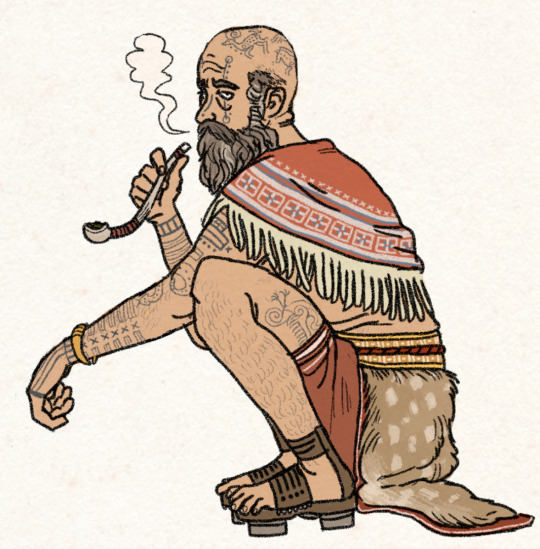
A witch of the Naig-Troibadnnas (Yellowtail river valley) people, resting and enjoying a smoke of the mild stimulant brolge leaf on a hot summer day.
Witches are a small part of the everyday cultural framework among the Hill Tribes. They are individuals considered born possessed by a virgranul, a type of disembodied wild spirit that seeks to inhabit human flesh, either entering the body at the moment of conception, or entering the body at the moment of death. The latter is a dire circumstance that requires significant intercession to fix (the dead body may wander off without rites, leaving the person's soul trapped and liable to warp into the dangerous fuldaigh spirit), while the former circumstance is what causes a person to be born a witch.
In the case of those afflicted in the womb, possession by virgranul is lifelong, and is both a curse and blessing- it divides and isolates them from the human world and causes other wild spirits (both benevolent and malicious) to be perpetually drawn to them, but also allows for them to be attuned to the subtleties of spirits, and able to work magic and divination that the everyday person is incapable of.
Witches are usually recognized from a young age due to marked behavioral differences or atypical development, though are sometimes simply identified as such without obvious behavioral indications, by other witches having read signs of their coming. Their occurrence is not frequent, usually once in a generation for any given tribe. An identified witch child will be taken from their family (the timing varies by tradition, though is usually upon puberty) and into mentorship by an established witch, who will impart their accumulated knowledge and skill and teach the child how to best harness their condition.
One can be a witch regardless of their gender, with the only commonality being that they must remain unmarried, and are expected to never have children (deemed too dangerous, unavoidably placing a child in the path of potentially harmful wild spirits). With no spouses or children to support them in holding a household and herds, witches are instead supported by their communities as means of payment for their services. They typically live in semi-isolation in the boundaries between the village and wilderness (a reflection of their own division between the world of people and of wild spirits, and a protective measure for their communities), and will periodically be brought needed supplies. They do not commonly enter villages unless summoned, or for the sake of certain holidays and festivals, and live most of their lives in seclusion aside from any given mentee (who will in turn care for their mentor in old age).
The societal function of witches is as intermediaries between people and their ancestors, people and wild spirits, and as especially skilled performers of practical magic (most commonly weaving protective spells into worn items, such as clothing or the nose rings of cattle). Forms of practical magic and intercession with ancestors and spirits are performed by all members of society, but a witch has intimate, detailed knowledge of such things and tremendous natural skill that makes them an invaluable asset.
Witches personally discern the identities of the spirits living in any given area and will attempt to familiarize themselves with them, learning in depth about their ways, giving warnings of where the particularly dangerous (or mischievous) ones are, and giving recommendations on which will be receptive to offerings in return for boons. When a village needs to commune with a particularly powerful or dangerous spirit (such as a wildfolk witch), they will commonly send their own witch as an intermediary.
They are ascribed have the ability to directly summon ancestors (who otherwise come and go of their own volition, and rarely ever deign to come at the call of one who is not their descendant). This is of great use when a person finds themselves punished by their ancestors with no certainty as to why, or cases where an orphaned child's ancestry must be identified to gain them proper spiritual support.
They are also regarded as having innate qualities of divination, particularly in reading birdsign (itself generally acknowledged as communication from ancestors, and occasionally gods). The average person has basic knowledge in reading omens of birds and a learned repertoire of key signs, but a witch can divine the messages of birdsign in immense and specific detail, through a vast knowledge system of the meanings of the species, sex, flight direction, gaze, prey, number, and songs of birds. It is common for people to approach a witch for a reading of the skies before undertaking a significant venture or life change, in order to receive detailed and specific advice.
Witches are always literate (and will be taught to read and write by their mentor if they cannot already) and will record their repositories of knowledge in tomes. These are items of absolute secrecy and taboo for a non-witch to touch (the consequences can be severe, you really don't want a witch ancestor-spirit upset with you). Witches can often become competitive about the knowledge stored in these tomes and are known to organize heists amongst themselves in order to gain access to each other's secrets. Most people avoid getting themselves entangled into the complicated rivalries of witches, as these competitions can get ugly and result in many a petty curse if one gains a witch's ire.
---
The only visual cue distinguishing this man as a witch is the tattoos on his forearms, otherwise usually regarded as inappropriate to mark in the contemporary Hill Tribes cultural sphere (the face, upper arms, and sternum is reserved for important clan/tribe/ancestry identification, hands and forearms are reserved for witches, and the rest of the body is appropriate for decoration). These unique forearm tattoos indicate his ancestral connection with a lineage of witches, not blood ancestry but rather the generations of mentors that have produced him. The lines extending down to his fingers are the newest, indicating that he has fully mentored another witch and gained a place in this ancestral line.
The rest of the tattoos here are tribe and blood ancestry identifiers (on the face and upper arms respectively, worn by all members of society), and purely decorative imagery (visible here is a deer, horse, eagle, and a dragon). He also has a snake on his forearm, applied decades ago in an act of youthful rebellion, which has since gotten in the way of critical open skin space.
His clothing is otherwise typical wear for warm seasonal conditions- a man's wool shawl and woven belt, short trousers, decorative deer hide (distinct to the Naig-Troibadnnas), and sandals (these are imported Wardi style sandals, which have been modified with preferred elevated heels). The horn shaped torc on his forearm identifies him as an esteemed elder.
#I think I mentioned the witch tradition by implication in a couple posts but it hasn't come up directly#Witches here are very frequently going to be autistic or having other developmental disorders- with non neurotypical development#and behavior (though without marked intellectual disability) being seen as the impact of possession by virganul.#There's a parallel tradition of witches among the contemporary Finns (distant sibling cultural group to the Hill Tribes) but of MUCH#more core societal significance in which witch-kings are the central figures of power.#Both developed out of common ancestral traditions which diminished in centrality in the Highlands (witches going from clan#leaders to 'guy living on the outskirts of your village who you go to for magical assistance') and increased in centrality in Finns#(witches going from clan leaders to kings with magical powers granted by the gods)#You see a version of the historical predecessor for witches in the drawing of Kulyos and Bernike wrt his forearm tattoos#The proto-Hill Tribes would have regarded their chieftains as a type of witch and the tradition of marking the forearms would#have originally been exclusive to said chieftains. The societal centrality of witches has been lost but they retain traditions of#markings that would have originally identified them as leaders.#(That drawing is also a imaginative though and not just for the bird woman. He's wearing contemporary dress.)#hill tribes#\
231 notes
·
View notes
Text

Hey, Diet Angel... how about you go eat a dick?
Can't imagine why someone gave this up, unworn, at a southern Alberta Value Village.
#thrifting#shiftythrifting#submission#angel pin#tw diet culture#passive aggressive cherub#value village#fatphobia
346 notes
·
View notes
Text
Al Gassar Resort via Katara Cultural Village 💡✨

#Al Gassar Resort#The St. Regis Doha#Al Gassar Tower#Night Lights#Al Qassar#St. Regis#Hotel#Resort#Skyline#Dusk#Skyscrapers#Nightlife#West Bay#City Lights#Katara Beach#Katara Cultural Village#Katara#Beach#Doha#Qatar
90 notes
·
View notes
Text






Walking up the hill to Gamcheon Culture Village. Busan, South Korea.
213 notes
·
View notes
Text
To other English people, stop saying "England has no culture", it is actively harming us. There is a reason the Tories defunded the arts and heritage sectors whilst scapegoating immigrants. The fear that immigrants will come and destroy Englishness is only working as the government is literally trying to actively wipe it out. If we a) recognise the things that are distinctly cultural (eg architecture styles) and b) actively participate in the traditions you're always told are silly (Morris and Molly dancing, scarecrow competitions and folk songs), it will actually make us better as a country and more difficult to divide via classism, racism and xenophobia
To be extra clear, these traditions are for everyone, queer people, imagrants and anyone of any faith (including Islam).
The deliberate eroding of our folklore/traditions by conservatives (both big and little c) is allowing for the insecurities weaponised by the types of Tommy Robinson against imagrants. These traditions and folklore do still need challenging from a modern critical lense (like how blackface has been removed from Morris dancing). Nor should they be preserved exactly how they used to be, because folklore and customs have always changed with the times. Having a good understanding of our past, critically understanding and accepting of the problems in it will absolutely contribute to decolonisation. Hopefully, having a solid grasp of our own traditions and folklore in a meaningful positive way will allow us to step back from clinging desperately to the parts of Welsh, Scottish and Irish culture we cling to because we don't think we have our own. Doing so will also hopefully allow for more support of the Welsh, Scottish and Irish independence movements. Also, it will hopefully stop the rampant cultural appropriation of other sacred traditions - it's ridiculous that modern wiccans believe that smudging with a non native plant (white sage) that's being driven to extinction by over harvesting will clear any sort of bad luck.
#they speak#england#english culture#sincerely someone who's tired#yes we have traditional folk costumes and folklore and architecture styles and chruch traditions#our language is cultural - just because it is now a (forced) lingua franca don't forget that#please just go to a local museum or library and pick up a book of local folklore and history#go to the slightly shit village or town fête and watch the slightly shit morris dancers - do you know why they're slightly shit?#bc they're all Old. they're the only ones really actively participating in it#londoners especially stop doing this - of course you think there's no culture if you've never actually left london and actively participate#*participated in it
118 notes
·
View notes
Text




i have many thoughts but. my viera in their traditional clothes ^^
#ffxiv#ffxiv oc#ffxiv wol#sofusenpaiart#seljorn#their clothing is inspired by dunhuang feitian costumes!!#not true chinese traditional clothes but still intertwined with their history and culture#tho there are also dunhuang-style hanfu#if u r curious please look up more because the clothing is very beautiful :3#in my headcanon viera have celebrations when they come back to the village#happy time all around for everyone
83 notes
·
View notes
Text



Gamcheon culture Village is so pretty!!! Busan, South Korea.
164 notes
·
View notes
Text




Barberry farms/ Fourg Village/ Birjand/ Iran
#iran#persian#middle east#iranian#persia#farsi#travel#art#culture#fourg village#khorasan#autumn#fall#barberry
61 notes
·
View notes
Text


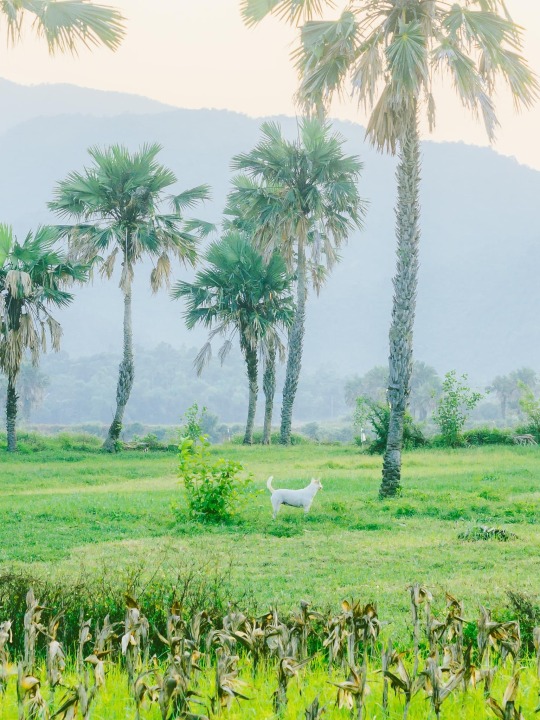


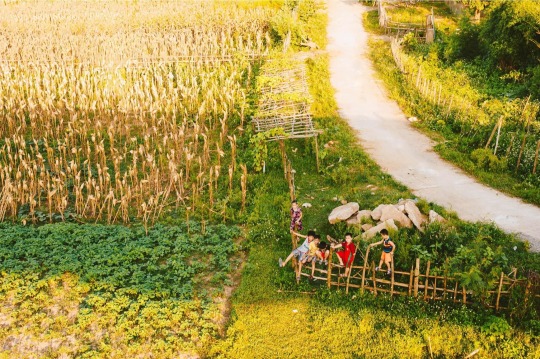
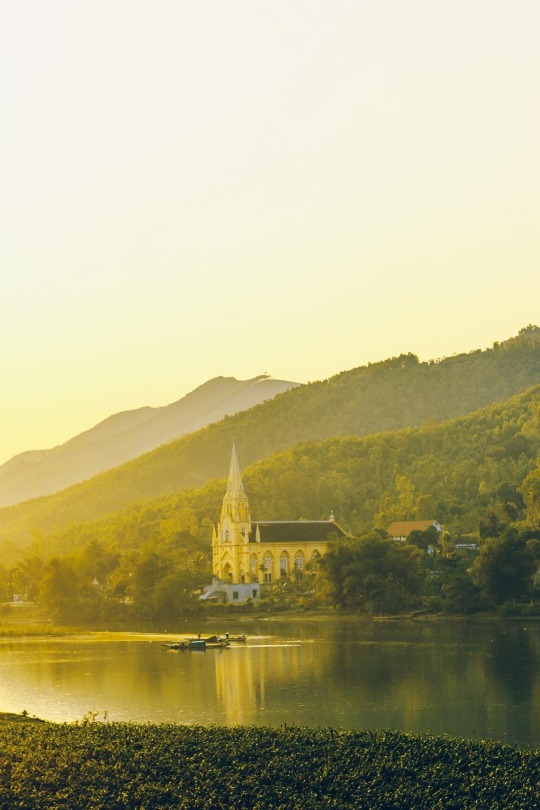


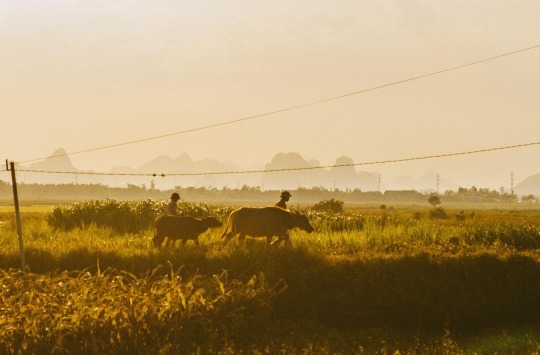
Village life in Central Vietnam. Credit to Đi Mô Rứa.
533 notes
·
View notes
Text
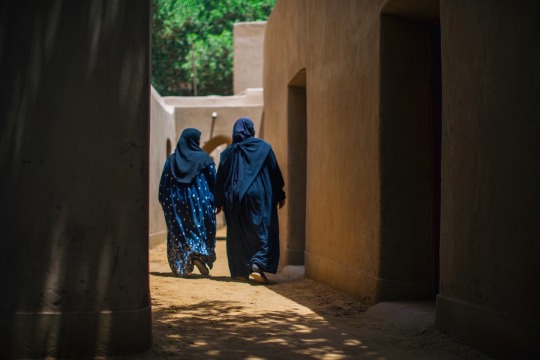
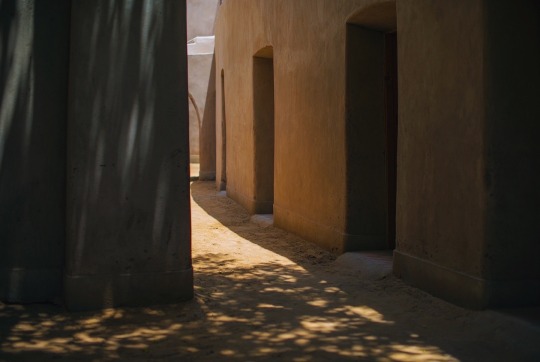
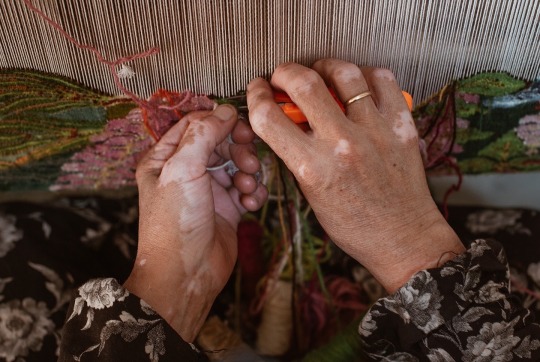

Beautiful morning 🌿
Ramses Wissa Waesf art center 🕊️🌻
#يوميات بنت إسمها ش#egypt#مصر#photography#thisisegypt#art#masterpiece#cairo#shaimaa fekry#artist#carpet#handmade#history#heritage#culture#travel#village
113 notes
·
View notes
Text
After gaining a little more information about Omashu from the games, I'd like to go into the South Asian/SEA references of the city.
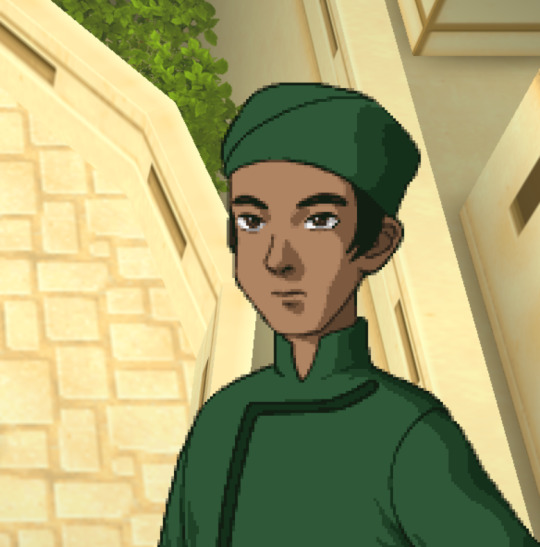

The common headdress for men in Omashu are turbans. They wear it the same style of the Cabbage Man which @atlaculture has matched it to a Khăn Vấn, a vietnamese turban:

The turban does have a similar shape, but depending the style, the Khăn Vấn can be wrapped like a headband that shows hair in the back, unlike the Omashu turbans that wrap completely around the head. Turbans have a long history that spans many cultures and religions, so here are some other turbans I thought looked similar:

These are the Sikh turbans, also referred as a Dastār. This particular style shown in the example is called the modern Dumalla. I thought the wrapped style was similar to the turban design in the game.

Another kind are the Islamic turbans found in South and South East Asia, such as Indonesia, Malaysia, and Bangladesh. The turban can come in different colors and patterns (I found only white ones for the examples, but I've seen green, yellow, and checkered before).
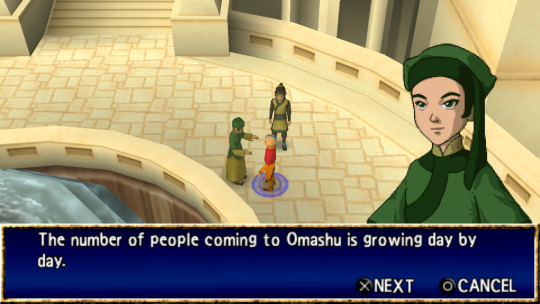
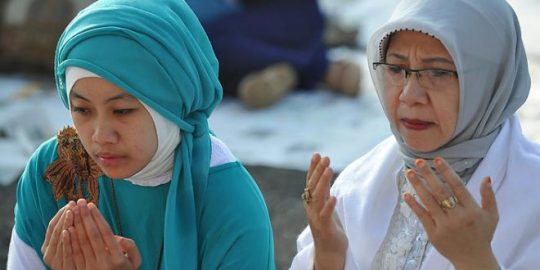
The women in Omashu also wear head coverings and this one in particular reminded me of the hijab style I've seen Indonesians wear.
Another cultural reference @atlaculture covered is how King Bumi's rock candy he encased Sokka and Katara with is like the rock sugar used in Asia. The method of developing rock sugar, or Misri, was invented in India and is the oldest refined form of sugar. It's used as candy or a sweetener for milk and tea. In Karnataka, it's served with water for guests in the summer.

Lastly, Bumi's name has ties to South and South East Asia. @cyndaquillt has already done a wonderful post going into Bumi's name from a South Asian view:
Bhumi (भूमि, pronounced bhoo-mi) is a Sanskrit word that means ground. The root of the word is Bhu (भू) which means earth.
There's also @ririsasy additions, that Bumi is the Indonesian word for Earth. In Indonesia, Bumi is a name usually given to males, while Bhumi is a name commonly given to Indian women, and is the name of the goddess of Earth in Hinduism.

There's many overlaps between these cultures and more, but overall Omashu leans towards a more South Asian/SEA setting than East Asian compared to the rest of the Earth Kingdom. Any additions or corrections are welcome!
#some of these references are a biiit stretched#because of atla's pan-asia setting#but whats so fun is the mix of culture#that occurs in real life as well#and i really like the idea of Omashu being south asian/sea inspired#to give the EK some variety#like how some of the villages zuko and iroh go to resemble korea or vietnam#atla#atla the game (2006)#king bumi#game sense
466 notes
·
View notes
Text
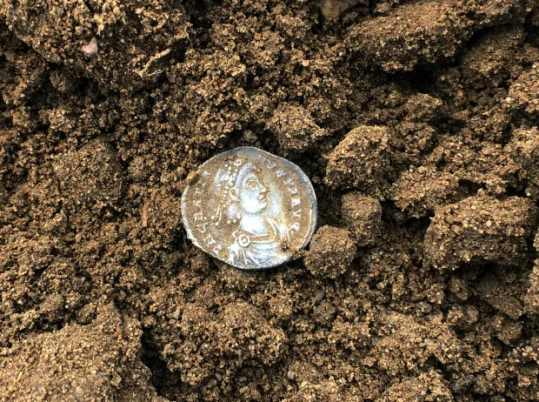
Roman Coin Hoard Found in England Sells at Auction
A hoard of Roman coins discovered by a metal detectorist scouring farmland has fetched more than £15,000 after going under the hammer.
More than 430 coins were found buried in the village of Colkirk, near Fakenham, Norfolk.
A collection of 73 pieces, including an extremely rare coin featuring a phoenix on a globe, was auctioned in London.
The anonymous finder had shown "perseverance", said coin specialist Nigel Mills, from Noonans auctioneers.
"Some of the people I've spoken to recently, who have found some amazing finds, are spending a lot of time detecting - hours and hours - and they don't give up," he said.

"They keep going and that's the secret in so many things - don't give up, keep looking."
The Colkirk hoard, believed to date back to the early 5th Century, was spread out across a third of an acre on arable farmland, although the majority of finds were discovered in a 1.5m (59in) radius.
It was a lucky find for the detectorist, who had no idea the soil held such treasures.
They were out searching a field in January 2020 when they spotted a silver coin, which they recognised as a siliqua - a small, thin Roman coin.
It sparked a haul of 40 coins that day, with a further 40 found on the following one.
Covid lockdowns meant searches became more sporadic, but each discovery was logged with a portable GPS unit to accurately pinpoint the hoard's distribution.
In all, 315 coins were found in 2020, 114 in 2021 and three in 2022.
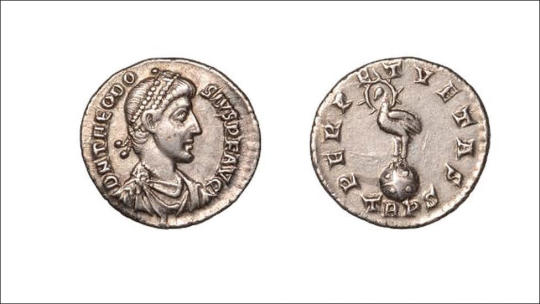
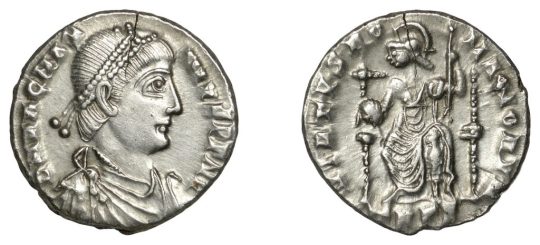
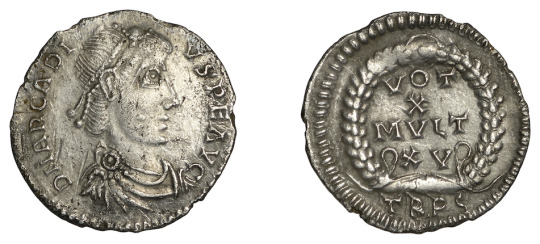
Some of the coins had been damaged, while others were fragmented due to farming processes.
A commemorative Third Miliarensis coin issued by Emperor Theodosius, decorated with a phoenix on one side, was only the fifth one of its type known to exist, with all the others in museums.
It reached £3,400 at the sale in Mayfair.
Mr Mills said: "The hoard had [been] spread out over a third of an acre through disturbance by ploughing and has been recorded under the Treasure Act.
"The hoard is likely to have been deposited at the beginning of the 5th Century AD, with the latest coin of Honorius dating no later than 402 AD.
"Other Roman treasure finds of gold and silver also from East Anglia, such as the Hoxne and Thetford hoards, reflect the wealth and importance of the area."
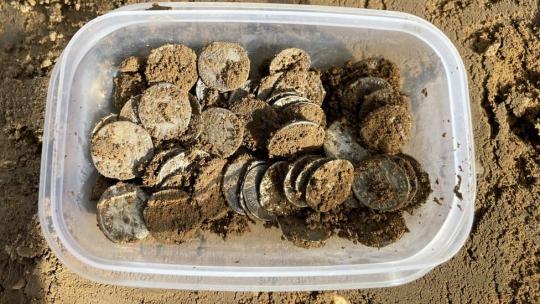
#Roman Coin Hoard Found in England Sells at Auction#village of Colkirk#metal detecting#coins#collectable coins#roman coins#ancient coins#ancient artifacts#archeology#archeolgst#history#history news#ancient history#ancient culture#ancient civilizations#roman history#roman empire#roman art
201 notes
·
View notes